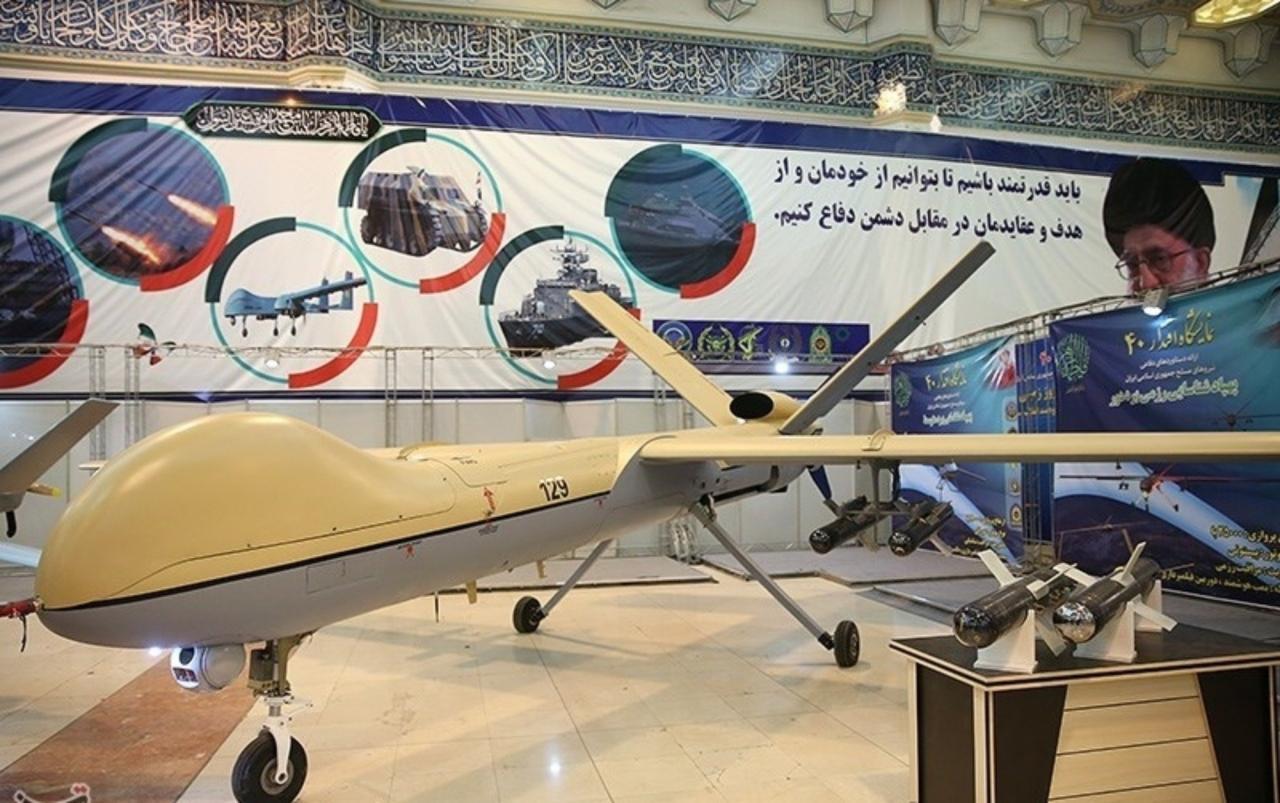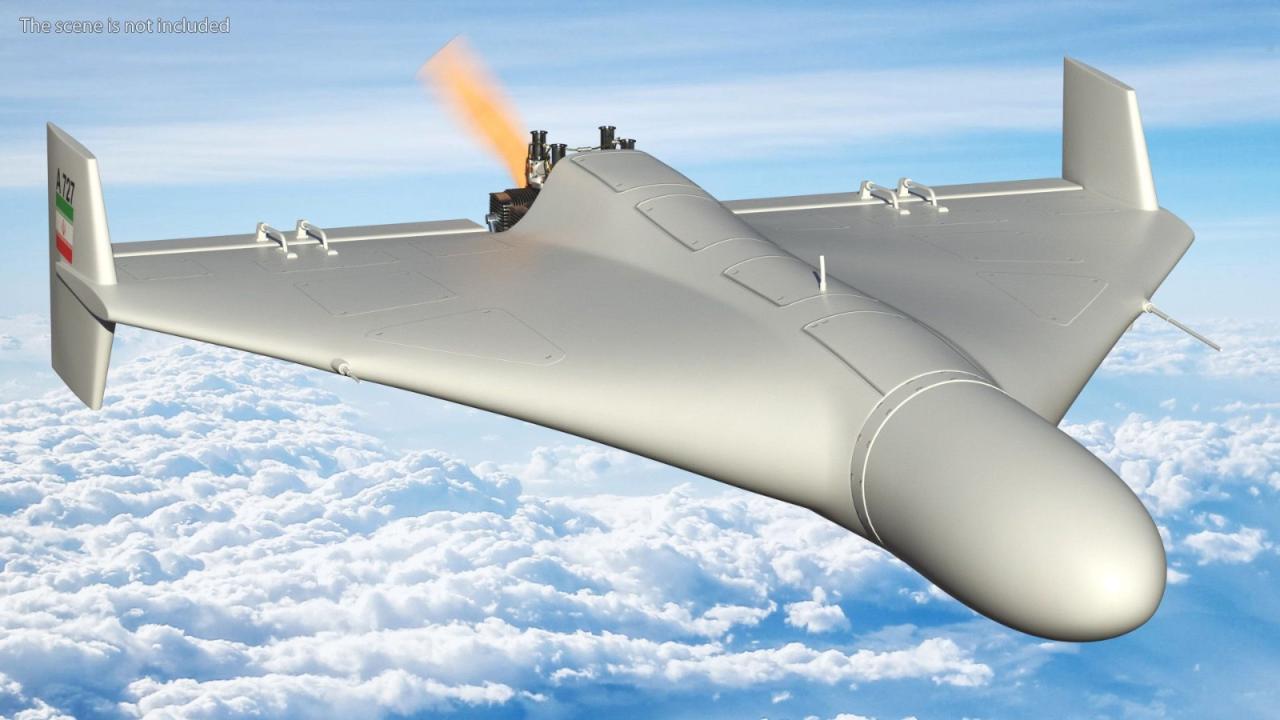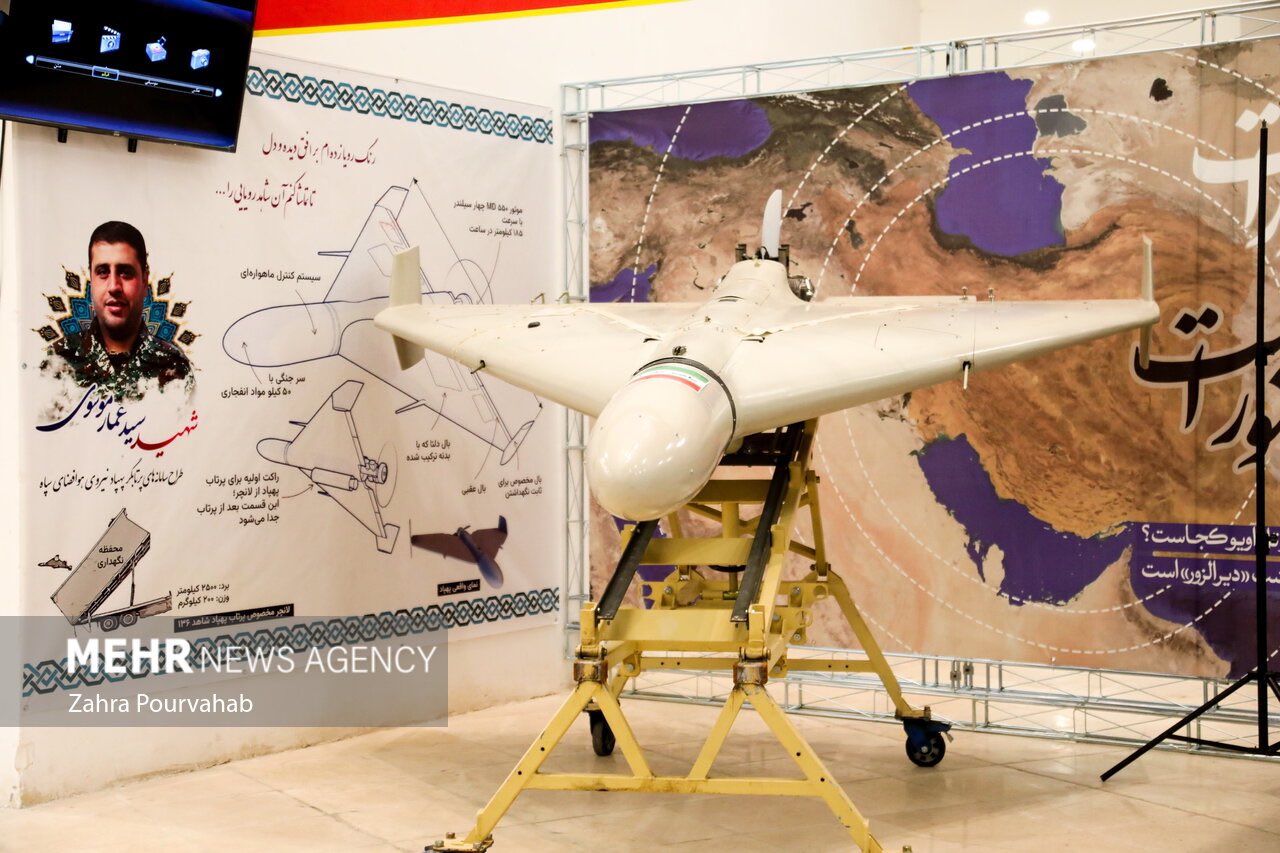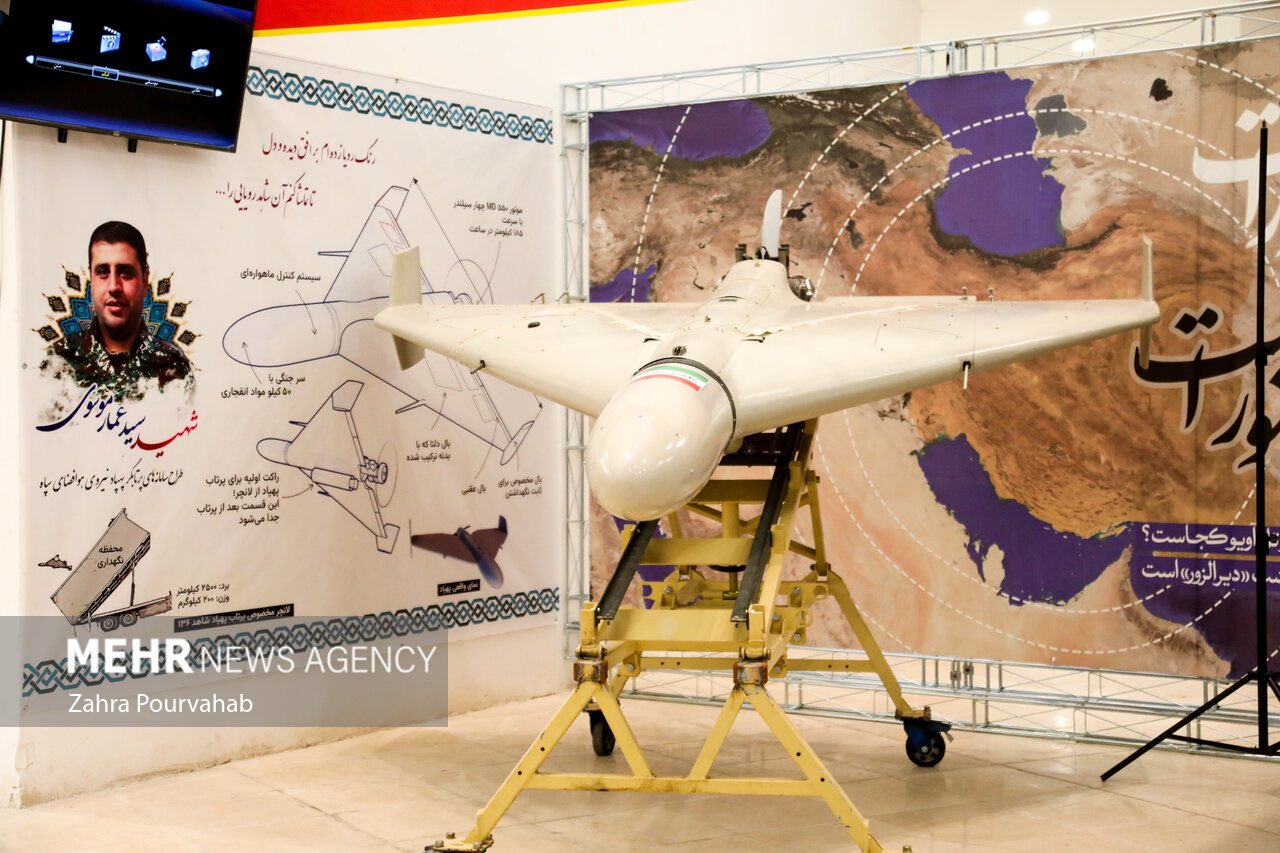Shahed drones have emerged as a significant player in modern conflict, prompting global discussions on their military applications, ethical implications, and countermeasures. These relatively inexpensive, readily available unmanned aerial vehicles (UAVs) have demonstrated surprising effectiveness in various theaters of war, raising critical questions about the future of asymmetric warfare and the challenges of countering such threats.
This exploration delves into the design, operational capabilities, manufacturing processes, military applications, countermeasures, and ethical considerations surrounding Shahed drones. We will analyze their impact on the global security landscape and examine the technological advancements driving their evolution and proliferation.
Shahed Drone: A Comprehensive Overview

The Shahed drone, a relatively low-cost, expendable unmanned aerial vehicle (UAV), has gained significant attention for its widespread use in various conflicts. This analysis delves into its design, operational capabilities, manufacturing, military applications, countermeasures, ethical implications, and visual characteristics.
Shahed Drone Design and Specifications

The Shahed drone, also known by various designations including the Mohajer-6, is characterized by its relatively simple design and construction. It’s a fixed-wing UAV, typically constructed from lightweight composite materials to maximize payload capacity relative to its overall weight. Dimensions vary slightly depending on the specific variant, but generally fall within a range suitable for transport and deployment from various platforms.
The propulsion system usually consists of a small, relatively low-power internal combustion engine driving a propeller, providing adequate thrust for its intended operational range and payload. Payload capacity is typically limited to a small warhead or other explosive device, though some variants may carry reconnaissance equipment.
| Specification | Shahed Drone | Similar Drone A | Similar Drone B |
|---|---|---|---|
| Wingspan (m) | 2.5 (estimated) | 3.0 | 2.0 |
| Length (m) | 2.0 (estimated) | 2.5 | 1.8 |
| Weight (kg) | 20 (estimated) | 25 | 15 |
| Payload (kg) | 5 (estimated) | 10 | 3 |
Shahed Drone Operational Capabilities
The Shahed drone’s operational capabilities are a key factor in its tactical effectiveness. Its flight range is generally considered sufficient for short-to-medium range missions, with endurance typically measured in hours. Navigation and guidance rely on a combination of inertial navigation systems and potentially GPS, although susceptibility to GPS jamming has been reported. Communication is established via radio links, making it vulnerable to electronic warfare countermeasures.
The relatively low cost and expendable nature of the drone allow for swarm tactics, saturating defenses with multiple simultaneous attacks.
The Shahed drone, a relatively inexpensive yet effective weapon, has garnered significant attention for its use in various conflicts. Understanding its capabilities requires examining potential deployment locations, and a useful resource for observing maritime activity is the port dover live camera , which offers a real-time view of vessel movements. Analyzing such footage can provide insights into potential targets and deployment strategies of Shahed drones, furthering our understanding of this technology’s impact.
Manufacturing and Acquisition of Shahed Drones
The primary manufacturer of Shahed drones is believed to be an Iranian entity. The exact cost of production remains unclear, but estimates suggest a relatively low unit cost, contributing to their affordability and widespread deployment. The supply chain involves procuring components from various sources, both domestically and internationally, though specific details remain largely unknown due to the clandestine nature of the operation.
The export and distribution networks are believed to leverage existing arms trafficking routes and strategic partnerships.
Military Applications and Tactics of Shahed Drones
Shahed drones have been employed extensively in various conflicts, primarily for attacks against infrastructure and military targets. Tactics often involve launching large numbers of drones simultaneously to overwhelm defenses. The effectiveness varies, with accuracy often being a limiting factor, yet the sheer number of drones deployed can achieve a significant impact. The tactic of employing swarms to overwhelm air defenses contrasts with the precision strike capabilities of more sophisticated, high-cost drones.
A hypothetical scenario might involve a coordinated attack on a critical military facility. A swarm of Shahed drones, launched from a concealed location, would overwhelm air defenses with their sheer number. While some would be intercepted, a significant portion would reach their target, causing damage and disruption. The success of this tactic hinges on the element of surprise and the sheer volume of the attack, compensating for individual drone inaccuracy.
Countermeasures and Defenses Against Shahed Drones
Numerous countermeasures have been developed to combat Shahed drones. These include electronic warfare systems to disrupt communication and navigation, as well as kinetic and non-kinetic methods for physical destruction. However, the low cost and expendable nature of the drones pose significant challenges. The effectiveness of countermeasures varies greatly depending on the specific technology and the sophistication of the drone’s countermeasures.
- Improved radar systems with enhanced detection capabilities.
- Development of more effective electronic warfare systems.
- Deployment of anti-drone weapons systems with higher hit rates.
- Investment in layered defense systems combining multiple countermeasures.
Ethical and Legal Implications of Shahed Drone Use

The use of Shahed drones raises significant ethical and legal concerns. The relatively low cost and ease of use make them accessible to non-state actors, blurring the lines of accountability and potentially exacerbating conflicts. International humanitarian law and the laws of armed conflict are applicable, but enforcement presents challenges due to the difficulties in attribution and the often indiscriminate nature of attacks.
| International Law/Treaty | Key Provisions Relevant to Shahed Drone Use |
|---|---|
| Geneva Conventions | Protection of civilians, distinction between combatants and civilians. |
| Additional Protocols to the Geneva Conventions | Restrictions on methods and means of warfare. |
| UN Charter | Prohibition of the use of force against the territorial integrity or political independence of any state. |
Shahed Drone Imagery and Visual Analysis
A Shahed drone in flight exhibits a characteristic silhouette, with relatively long, slender wings and a rear-mounted propeller. Identifying markings may vary, but visual analysis can often focus on the overall shape, size, and propulsion system. Distinguishing a Shahed drone from other UAVs requires careful attention to detail, considering wingspan, fuselage shape, and the type of propulsion system. Analysis of wreckage would involve examination of the materials used in construction, the type of engine, and the remnants of the payload.
A hypothetical image of Shahed drone wreckage might show fragments of lightweight composite materials, a partially intact small internal combustion engine, and remnants of the explosive payload. The damage pattern could indicate the cause of destruction, such as impact damage from a missile or shrapnel.
The proliferation of Shahed drones presents a complex challenge with significant military, political, and ethical ramifications. While their low cost and relative ease of production make them attractive to various actors, their potential for widespread use necessitates a multifaceted approach to both defense and international regulation. Further research and technological innovation are crucial to developing effective countermeasures and mitigating the risks associated with this increasingly prevalent weapon system.
The Shahed drone, a relatively inexpensive but effective weapon, has garnered significant attention for its use in various conflicts. Incidents involving unmanned aerial vehicles are not uncommon, as evidenced by recent news reports detailing a concerning increase in drone crashes in New Jersey , raising questions about airspace security and potential threats. This highlights the broader challenge of managing the proliferation and potential misuse of drone technology, especially concerning the Shahed drone’s impact on global security.
Popular Questions
What is the lifespan of a Shahed drone?
The operational lifespan varies depending on usage and maintenance, but it’s generally considered to be relatively short compared to more sophisticated drones.
How are Shahed drones typically launched?
They are typically launched from land-based mobile launchers, though other methods may exist.
What type of explosives are commonly used in Shahed drone payloads?
While precise details are often classified, reports suggest high explosives are frequently used.
Are there any known limitations in the Shahed drone’s targeting systems?
Their targeting accuracy is reported to be less precise than some more advanced drones, leading to collateral damage concerns.
